Problème :
Les documents d'un système SAP devraient être affichés. Mais certains problèmes se posent.
A) Le document devrait être affiché dans la Visionneuse ECL propre à SAP.
Bien que les documents provenant de Connect To SAP soient transmis en tant que .dwtiff et en tant que type MIME image/tiff, le téléchargement du document est effectué soit sans suffixe, soit avec un faux suffixe (p. ex. .mdb).
B) Le document devrait être affiché dans le navigateur Internet, mais les documents sont appelés sur le client sans extension de fichier lors de l'affichage de documents provenant de SAP et ne s'ouvrent donc pas automatiquement dans la Visionneuse appropriée. Le fichier est souvent simplement "exécuté".
Solution :
Avant d'appliquer toutes ces solutions, assurez-vous que le dernier hotfix Pack est installé :
- DocuWare Version 6.8 Hotfix 04
- DocuWare Version 6.7 Hotfix 40
- DocuWare Version 6.6 Hotfix 58
Pour obtenir ces hotfixes, veuillez consulter http://go.docuware.com/HFPacks.
Solution A.1) Du côté de DocuWare, vérifiez le fichier DWSAPHTTPServer.exe.config si l'extension de fichier est disponible (dans votre cas, peut-être .dwtiff ?). Les valeurs dwtiff=image/tiff ou pdf=application/pdf par l'option SAPMimeTypes. Dans le cas contraire, veuillez ajouter.
Exemple :
<add key="SAPMimeTypes" value="bin=application/octet-stream|doc=application/msword|pdf=application/pdf|ps=application/postscript|rtf=application/rtf|xls=application/vnd.ms-excel|mpp=application/vnd.ms- project|ppt=application/vnd.ms-powerpoint|msg=application/vnd.ms-outlook|alf=application/x-alf|otf=application/x-otf|raw=application/x-raw|reo=application/x-reo|scr=application/x-scr|bmp=image/bmp|gif=image/gif|jpg=image/jpeg|pcx=image/pcx|image/tiff|dwtiff=image/tiff|html=text/html|txt=text/plain|note=application/x-note|descr=application/x-alf-descr"/>
Solution A.2) Vérifiez les paramètres suivants des "Paramètres d'affichage" sur le serveur SAP. Les Paramètres dans l'OAG4 et l'OAA3 sont en relation de cause à effet.
- Essayez également l'option 'Data Provider Cache Disable '.
- Essayez également l'option "Appeler le navigateur Internet " (le navigateur de l'ordinateur doit être utilisé pour ouvrir le document).
Transaction OAG4 :
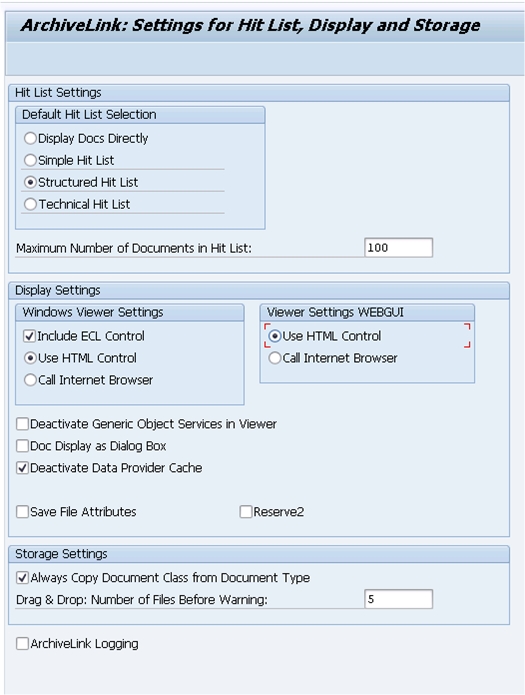
Transaction OAA3 :
La version doit être 0045.
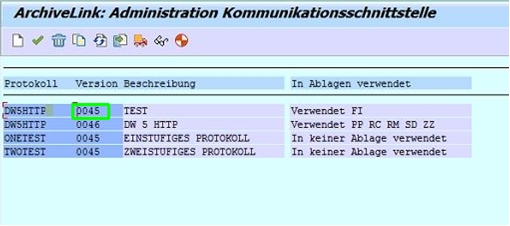
A cet endroit, le protocole n'est utilisé que pour le référentiel de contenu 'FI'.
Dans ce protocole, les types de fichiers seront assignés. Chacune des trois fonctions est adaptée ('Display Stored Document', 'Providing Frontend', ' Display Lokal File').
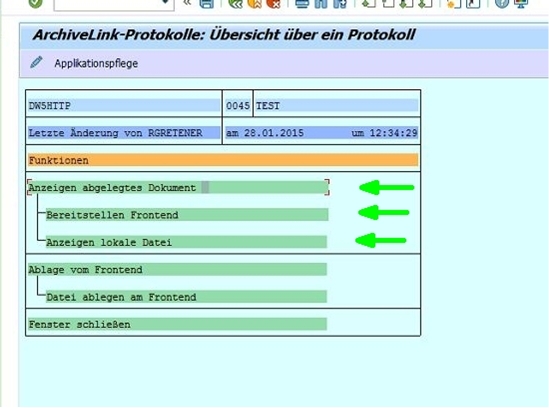
Pour 'Display Stored Document', c'est le type de document 'TIF' qui est affecté au type de communication 'ARCHIVELNK'.
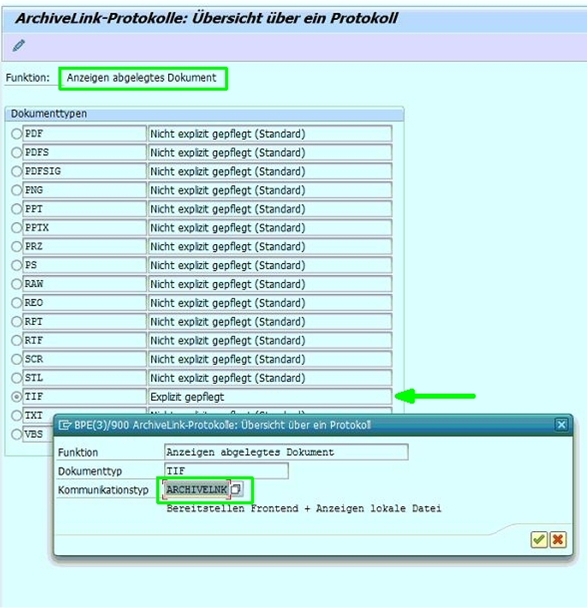
Pour "Providing Frontend", il s'agit du type de document "TIF" associé au type de communication "HTTP".

Pour "Display Local File", il s'agit du type de document "TIF" associé au type de communication "ARCHIVELNK".
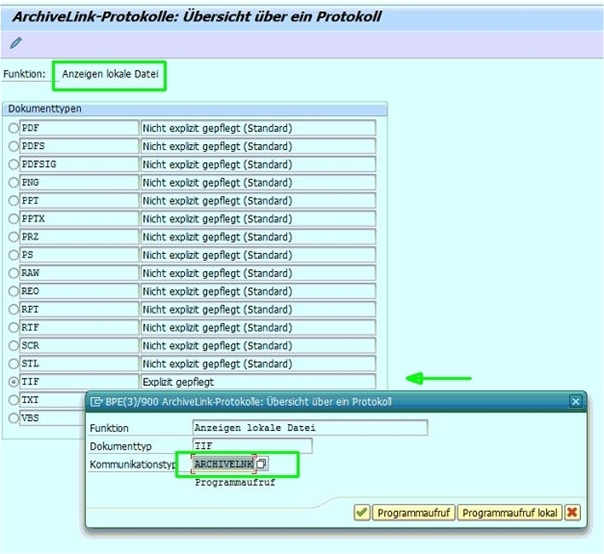
Solution B.1) Pour ce type de fichier, exécutez une réaffectation de l'extension de fichier au programme Windows standard.
http://windows.microsoft.com/de-de/windows/change-default-programs#1TC=windows-7
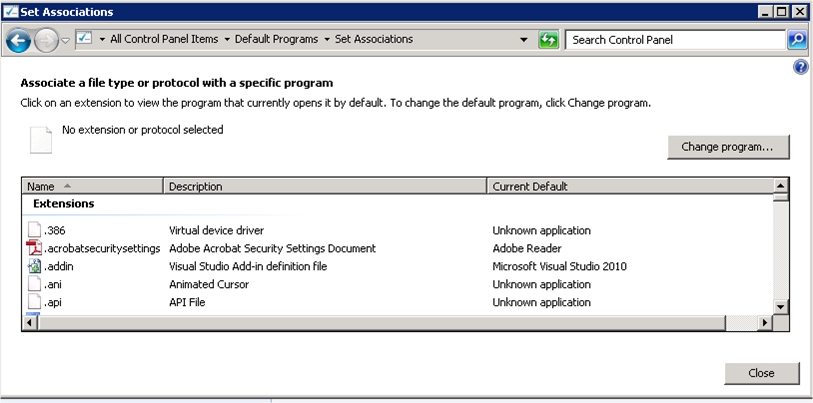
Solution B.2) Dans certains cas, il suffit de mettre à jour la version installée de Microsoft Internet Explorer et de réinitialiser le niveau de sécurité de la zone de sécurité en question à "default".
Solution B.3)S'il existe un client sur lequel le document peut être visualisé avec succès depuis SAP, ouvrez le registre Windows* sur cet ordinateur (Démarrer > Exécuter > "regedit") et entrez dans la clé "HKEY_CLASSES_ROOT\MIME\Database\Content Type".
Tous les types MIME de cette branche sont attribués à une application associée.
Exporter la clé affectée par le type MIME défectueux (par exemple "image/tiff") de cet ordinateur et importer cette clé sur tous les clients sur lesquels l'affichage ne fonctionne pas.
N'importer la clé de registre que sur des ordinateurs ayant la même version de système d'exploitation que l'ordinateur à partir duquel la clé a été exportée.
Le document devrait maintenant s'afficher correctement. Il peut être nécessaire de redémarrer Internet Explorer et le SAPGUI après avoir effectué ces modifications.
* Remarque : les modifications apportées au registre Windows peuvent perturber la stabilité et le fonctionnement de Microsoft Windows ou des programmes et composants installés. Les modifications ne doivent être effectuées qu'avec une extrême prudence et par des personnes expérimentées. DocuWare AG n'assume aucune garantie ou responsabilité pour les erreurs provoquées par les modifications du registre en rapport avec cet article de la base de connaissances ou toute autre instruction. Si vous avez des questions concernant les modifications du registre Windows, veuillez contacter Microsoft.
Veuillez noter : Cet article est une traduction de l'anglais. Les informations contenues dans cet article sont basées sur la ou les versions originales des produits en langue anglaise. Il peut y avoir des erreurs mineures, notamment dans la grammaire utilisée dans la version traduite de nos articles. Bien que nous ne puissions pas garantir l'exactitude complète de la traduction, dans la plupart des cas, vous la trouverez suffisamment informative. En cas de doute, veuillez revenir à la version anglaise de cet article.


